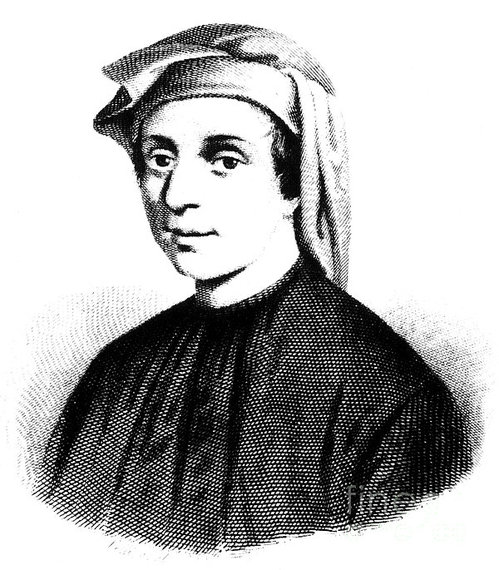"These are the nine figures of the Indians: 9 8 7 6 5 4 3 2 1. With these nine figures, and with this sign 0 which in Arabic is called zephirum, any number can be written, as will be demonstrated."
Leonardo Pisano Bigollo or better known as Fibonacci was an Italian mathematician born in the twelfth century in Pisa, Italy. He traveled around the world to places like North Africa, Algeria, Egypt, Syria, Greece, Sicily, and Provence. When he returned from his travels, he wrote a mathematical book called Liber Abaci (Book of Calculation) relaying what he had learned from his travels. In Liber Abaci, he is best known for spreading the Hindu-Arabic numeral system in Europe in 1202 and also for a number sequence called Fibonacci numbers. Fibonacci wrote 5 mathematical works including 4 books and one letter.

Fibonacci recognized that "arithmetic with Hindu-Arabic numerals was simpler and more efficient than Roman numerals" so he wrote Liber Abaci introducing "numeration with the digits 0-9 and place value." He showed how "commercial bookkeeping, conversion of weights and measures, the calculation of interest, money-changing, and other applications" could be done simpler using the Hindu-Arabic numeral system rather than Roman numerals. Fibonacci therefore, revolutionized the way we do math today. Can you imagine if we still used Roman numerals today? I don't think mathematics would have advanced as fast as it did without Fibonacci's contribution.
Also in Liber Abaci, Fibonacci introduced a problem involving growth among rabbits and solves it using a sequence or Fibonacci numbers. This sequence was used by Indian mathematicians around the 6th century but it was Fibonacci who wrote about it and introduced it to the West. Therefore, Fibonacci did not create the sequence he merely passed it on and was later named after it. The amazing fact about the Fibonacci sequence is that it can be found in nature among bees, shapes of shells, and the spirals of seeds in a seed head (sunflowers). Out of the Fibonacci sequence comes the golden ratio which comes from taking two successive numbers in Fibonacci's series, dividing each by the number before it, plotting these values and seeing that the numbers are tending to a limit known as Phi. Dr. R. Knott puts it best when he says "...just as the ratio of successive Fibonacci numbers eventually settles on the golden ratio, evolution gradually settled on the right number too. The legacy of Leonardo Pisano, aka Fibonacci, lies in the heart of every flower, as well as in the heart of our number system."
Ars Magna:
The Ars Magna or "The Great Art" is a book on Algebra written by Italian Renaissance mathematician, physician, astrologer, philosopher, and gambler, Gerolamo Cardano. He wrote more than 200 works on medicine, mathematics, physics, philosophy, religion, and music. The Ars Magna was first published in 1545 and was titled Artis Magnae, Sive de Regulis Algebraicis Liber Unus (Book number one about The Great Art, or The Rules of Algebra). Gerolamo wrote a second edition published in 1570 which is considered one of the three greatest scientific treatises of the early Renaissance.

References:
http://plus.maths.org/content/life-and-numbers-fibonacci
http://en.wikipedia.org/wiki/Fibonacci
http://www.maths.surrey.ac.uk/hosted-sites/R.Knott/Fibonacci/fibBio.html
http://en.wikipedia.org/wiki/Ars_Magna_%28Gerolamo_Cardano%29
http://en.wikipedia.org/wiki/Girolamo_Cardano
http://en.wikipedia.org/wiki/Niccol%C3%B2_Fontana_Tartaglia
Thorough history, well written. The only thing I'd want to see you add is some consolidation: either what does this history matter now or to you, or what's the connection or moral of these two quite different mathematicians?
ReplyDelete